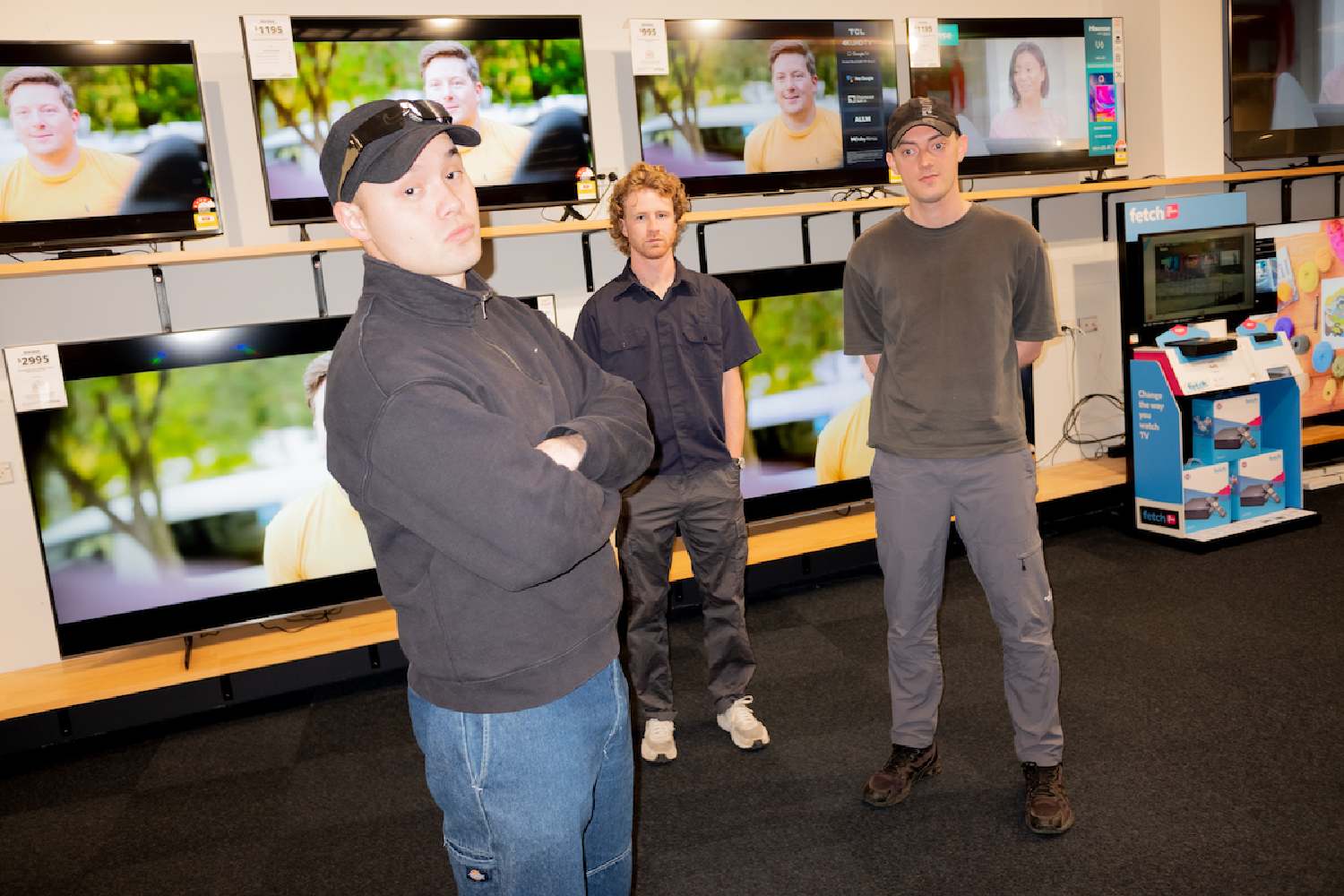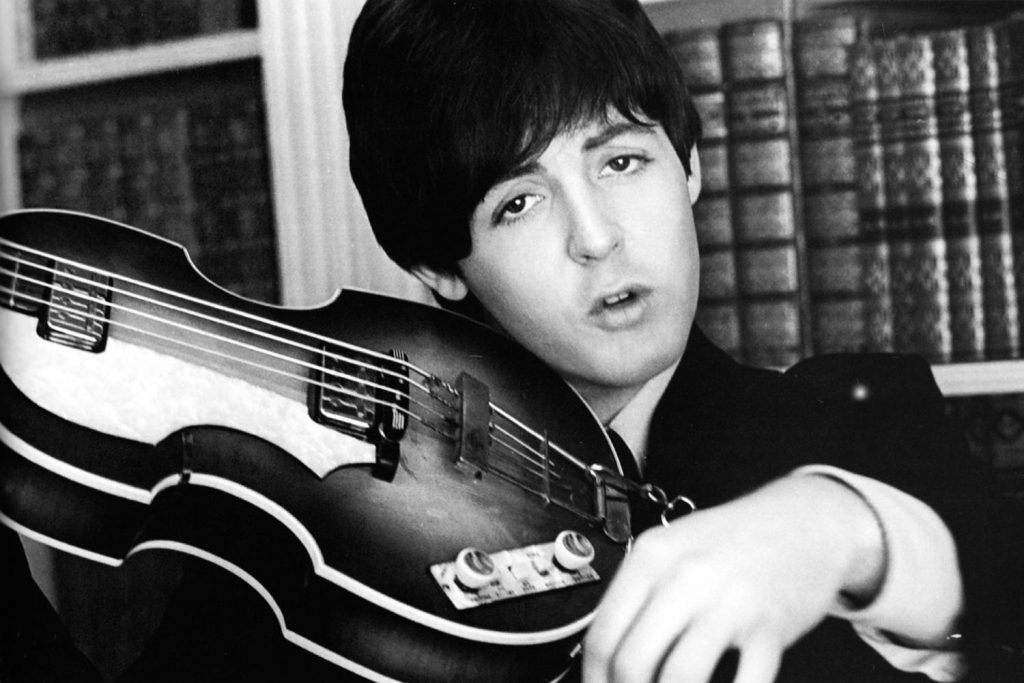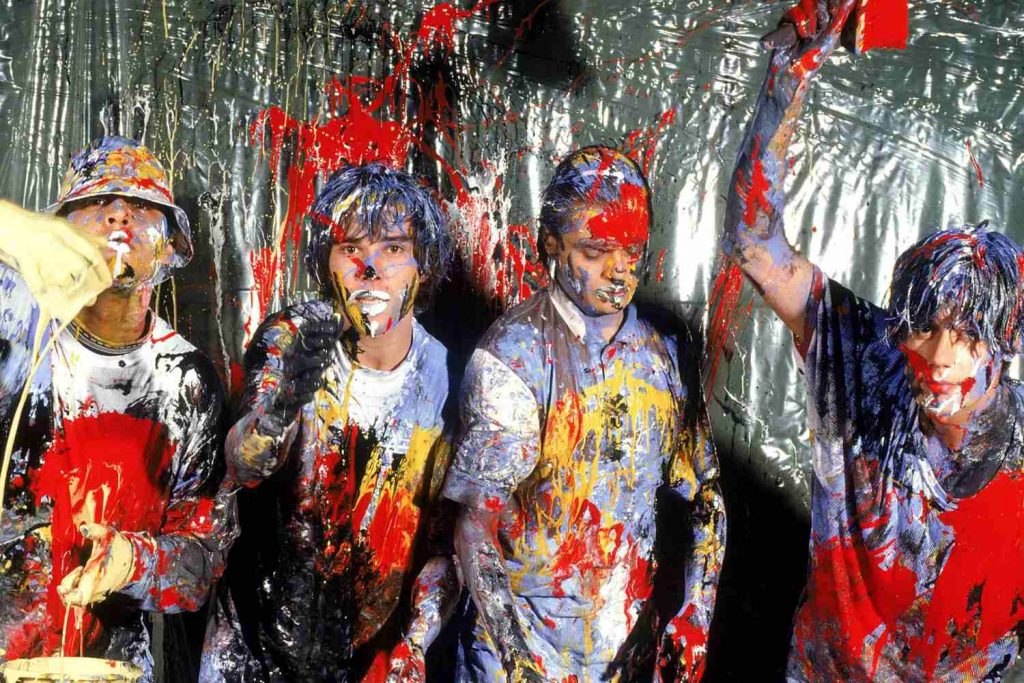Photos by Mish Bae
Shady Nasty were kind enough to take the time to break down their workflow, inspirations and more for Mixdown readers.
I first came across Shady Nasty on recommendation a few years ago and was completely floored by their sound. It was so unbelievably up my alley, but also unlike anything I’d ever heard before. The ringing guitars paired with a phone call sample on an earlier cut ‘Get Buff’ instantly drew me in, and I was hooked well before the drums kicked in.
Read up on all the latest features and columns here.
It’s not often you feel a sense of excitement around a new band that truly resonates like Shady Nasty does. Their lyrical content not only hits hard but is filled with introspection and compelling imagery of modern Australian subculture. They’re a band with a strong vision, pushing boundaries whilst remaining authentic to themselves, an ethos evidenced by their striking self directed music videos. Their songwriting is established, nonlinear, and is the reason why I’ll remain a fan for life. Ahead of the release of their upcoming appearance at SXSW Sydney, Shady Nasty were kind enough to take the time to break down their workflow, inspirations and more for Mixdown readers.
To start things off I’d love to ask you about your approach to songwriting and production in general. A big part of what I like about your sound is how ethereal your recordings are while remaining so natural and live.
How do ideas begin? And what’s your process from playing in a room to then going into the studio?
KEVIN: Almost every single song we’ve written has been written together in the rehearsal room with our instruments turned up loud as fuck. We rock up to the rehearsal space, unload and set up all the gear, then start jamming or working on previous ideas until they either become something mad or they sound like shit. I’ve always found in the past that parts we’ve written individually at home will end up sounding completely different when we play them live together, and more often than not, worse than we intended. I think there’s magic in the room that can’t be replicated when writing by ourselves at home, possibly because every part we write has the intention of working well with the other instruments in the band. On the rare occasion that we’re really happy with something we’ve written, we’ll sit on it for a bit then make a janky demo on Ableton that we’ll then sit on for longer before sending it to our producer.
Let’s talk pedals, I’m often drawn in particularly by Hadyn’s Bass sounds that morph into captivating lead lines before plunging into more low frequency tones that really drive. What are your staple go to’s for live and recording?
What pieces of gear are most integral to the band for a live context? Are there any pieces that have stood the test of time since the beginning of the band or new additions that have come into rotation?
HAYDN: Generally I like to have a wide spectrum in terms of tone on the bass, largely because we are a three piece band, which leaves Kevin and I a lot of room for parts to flesh a song out. This is probably why a lot of my parts oscillate between lead and more of a rhythmic backing with some of the lower notes. I play through a 5 string bass which I tend to change the tuning on quite a bit, which allows me to play both the low notes and above the 12th fret at the same time which ends up making the parts more like piano parts in a sense, as if the left and right hand are playing simultaneously. I play through a Roland vocal/acoustic guitar amp that I modified, and run that through into my main bass amp, sort of as a preamp. It has a really nice reverb sound, and allows me to dial in the sound so that I can make things like pinch harmonics punch through better in the mix. I also use a Tensor tape delay pedal by Red Panda, these allow you to sample and pitch/reverse parts on the fly, I mainly use that for writing, and record it into an SP404 which also runs through the Roland amp.
One of the bigger breakthroughs I had writing was with an app I found for my phone..which shall remain nameless… that I again use for writing mainly, and have parts run through that on the SP404 as well.
KEVIN: Over the years I’ve chopped and changed the sound of my guitar, and as time has gone by we’ve also moved into a realm where Haydn’s bass does a lot more of the storytelling in the songs, leaving more space in my guitar parts allowing them to hit harder when I do play. I run a Fender Super Reverb amp which I’ve had for years, and on the pedalboard I run a Syntax Error 2, EHX superego (which I use to freeze notes or chords under my played parts as textures), Chase Bliss Dark World reverb which is epic and makes my guitar sound spooky, a Red Panda Tensor (same as Haydn) for pitch shifting and repeated loops, and a Hall Of Fame reverb. A lot of other pedals have come and gone and I’m sure that will continue to be the case. None of the pedals on my board currently are the same ones I started with back in the day, and I’m always looking for pedals that make the guitar sound different and interesting.
What are your home recording setups like? Do you often rough out demos yourself before heading into the studio? Any preference of DAW/demo setup that gets your ideas across before a recording?
HAYDN: Kevin and I both make demos at home and at Soundworks studios where we practise twice a week. Most of the time we will record all our parts there and make a rough demo before we take it to somebody that knows what they’re doing, and re-record it.
But there have been a few songs that I’ve pieced together by sampling iphone recordings from practice sessions, putting them into a session in Logic and adding parts to them later.
We are consistently writing new material but seldom does it make our live set, largely because we are very picky, so these days the set only consists of our Greatest Hits Compilation.
KEVIN: I have a little Scarlett interface and a bunch of cables and older mics that I keep in a bag which I bring to rehearsals whenever we have a song ready to demo. Usually what happens is I’ll record it, do vocals at home, mix it, send it to the boys, Haydn will say ‘brother that sounds like ass why does the mix sound like that’, I’ll say ‘it’s because I have no idea what I’m doing’, then I’ll sometimes send the stems to Haydn and he’ll fix it or I’ll just keep mixing the demo until everyone’s happy.
So I know a big part of your artistry is conveyed through visual mediums, in particular your music videos. Where do you draw your inspiration from? And what is your thought process going into the aesthetic and use of visual effects?
LUCA: Broadly, I’d say that I’m interested in the blending of our online and offline selves. I find the aesthetics of the internet and social media to be really striking when met by seemingly ordinary aspects of our lives in Sydney. Whether it’s taking selfies on the Tangara with a busted snapchat filter or scanning foods in Woolies with the MyFitnessPal app, there is something about meshing a local scene with something globally networked that I find worth exploring. I’m also inspired by committing to ideas. Recently, I made Kevin take off work to drive me 4 hours each way to Thredbo so we could take a car rim up to Mt. Kosciuszko. It was fucking awesome. A lot of the stuff we’ve done is not convenient to do but I’m proud to have gone the extra mile even if it doesn’t always see the light of day
I heard in another interview that your discovery of Show Me The Body was a turning point in the direction of your songwriting. How has this changed from the inception of the band? What influences you most musically in 2023?
KEVIN: yeah I heard ‘vernon’ by SMTB in the car one day years ago and it absolutely blew my mind; at that point I decided I was going to stop using distortion or fuzz pedals and start playing differently. The first batch of songs we wrote after that sounded like we were an SMTB cover band, the same way most bands kinda start out by taking major influences from artists they respect. As time has gone by I feel like we’ve really developed our own sound and style. These days my taste varies wildly but I think very little of it shows in the music we write. I feel that subconsciously we always try to create our own brand of music and always push to sound like ourselves, no matter how hard it is or how long it takes. It’s hard to explain but when we write stuff I don’t think we really have influences, just whatever sounds mad sounds mad, we all seem to know it when it happens.
Your single ‘Hardstyle’ is a fresh take on an older song you wrote a few years ago, what has changed since you originally wrote it and what inspired you dig it up from the archives?
KEVIN: We wrote Hardstyle back in 2019 and we knew it was fresh but there were little bits and pieces of it, particularly the lyrics, that didn’t satisfy us fully. We tried to rewrite the song numerous times over the years, and finally a couple months ago in the car on the 9hr drive back from a Melbourne show it popped back into my head again and I thought, fuck it, we’ll set a date in the studio to fix a couple things and we will work it out. We ended up re-recording vocals and guitars with a less aggressive tone to kinda match the new stuff we were writing, and we changed some lyrics and the outro to the point that now we are really happy with it, and more so relieved that we don’t have to try and rewrite it for the 57th time in the rehearsal room.
Your prior release ‘G Shock’ has been on high rotation for me this year, what can we expect in the coming months for Shady Nasty? Are you currently working on an album or any upcoming releases?
KEVIN: I’m really glad you like it, thank you! To be honest with you we have been writing an album for about a year now and it’s slowly getting there; the main focus for the rest of the year is to write more of it and hopefully finish it so that we have a debut album we’re all really proud of. It’s slow going but we will get there!
Keep up to date with Shady Nasty here.







